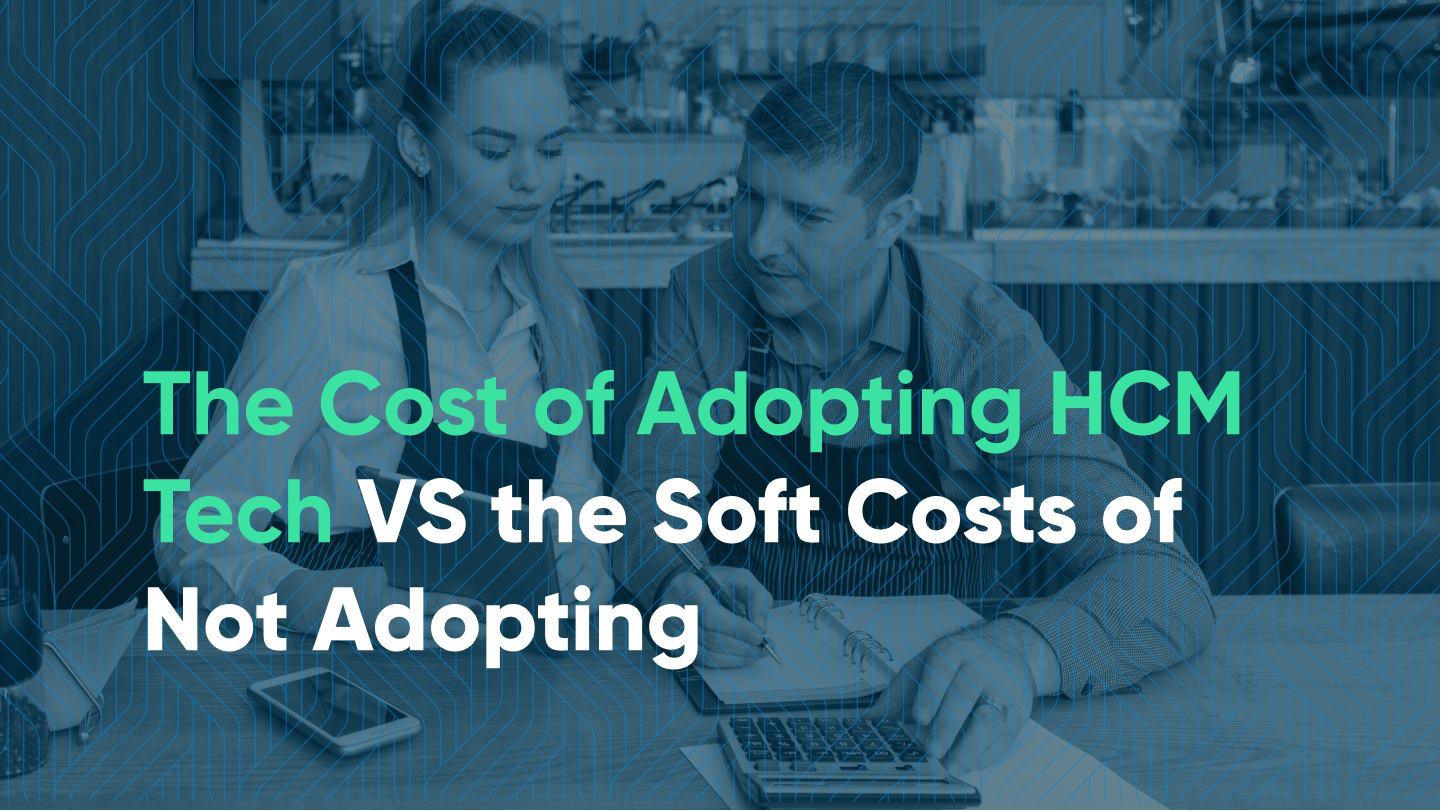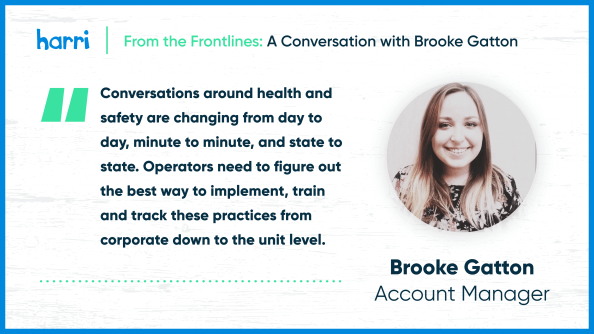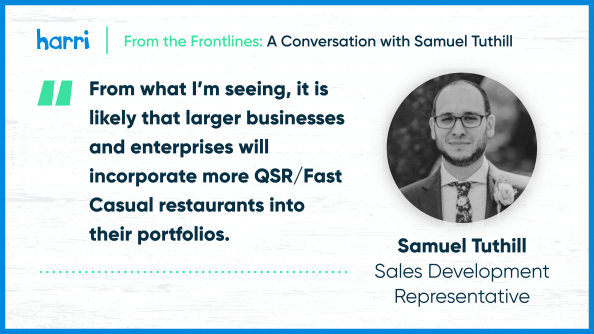The Cost of Adopting HCM Tech VS the Soft Costs of Not Adopting

- By Harri Insider Team | February 23, 2021
Starting, maintaining, and scaling a hospitality business is far from a cheap endeavor. Operators must navigate hard and soft costs related to product, utilities, labor, legal certifications, aesthetic items, and of course, tools and supplies to execute various jobs within the business. Even at a high level, the list of operational costs is overwhelming.
Some of these items may be chalked up as costs when really they should be considered investments. These upfront costs, like permits, equipment, and renovations allow you to conduct business, but they do not necessarily get you a return on your investment. These costs will be incurred whether or not you make money.
Unlike business costs, business investments are expenses that can easily be recouped. While they do have a cost associated with them, they pay for themselves over time by increasing revenue, streamlining costly operational processes, or improving team retention to decrease turnover costs.
We found that 61% of operators were considering tech investment to cope with rising labor costs. But not all businesses are ready to abandon their existing processes and take the leap towards tech adoption.
All-in-one HCM platforms empower operators to cut back on operational costs and better allocate resources towards profitable endeavors. Below, we’ll explain where and how upfront tech investment costs benefit hospitality businesses in the long-run.
Roadblocks to tech investment in hospitality
It can be tempting to hold off on tech-related business investments. Your business has operated this long using fragmented systems, spreadsheets, or even pen-and-paper management methods, so can we backburner tech investments?
The easy answer is yes, but the smart answer is no.
For hospitality businesses, the cost of not adopting an all-in-one HCM platform is far greater than the upfront cost of purchasing and implementing a system. Labor compliance requirements aren’t getting any easier, and COVID-19 has only worsened the industry’s ongoing struggle with high employee turnover rates.
Businesses that pivot towards tech adoption will see leaps and strides in operational success. Just look at brands like Chipotle, McDonald’s, and Red Robin who accelerated their tech investments during the pandemic. They came out stronger and better prepared for unforseen future challenges.
We’ll cover the difference between adopting HCM tech vs not adopting for various operational processes, and how the lack of an all-in-one HCM platform reduces a hospitality business’ potential for success.
Labor and scheduling efficiencies
Between a rising minimum wage and predictive scheduling laws like Fair Workweek, labor efficiency in hospitality is an absolute necessity. Restaurants that run labor-efficient operations, such as smarter scheduling, will see greater service outputs.
The costs of not adopting HCM tech for labor efficiency
For companies that do not adopt HCM technology, labor can be a costly and time-consuming process. Inefficiencies in the labor process can lead to missed revenue opportunities, sunk labor costs, and other miscellaneous opportunity costs.
Consider the process of creating an employee schedule.
Creating schedules without HCM tech may be possible, but they certainly won’t strike the balance between labor efficiency and quality service output in a labor-compliant scheduling environment.
What employees do you need to schedule, and when, to meet service demands without over or under-staffing? Are those employees eligible for overtime or breaks? Will your labor balance completely break if and when an employee calls in sick?
How can managers keep up with creating labor-efficient schedules without assistance, especially when they’re managing tens of employees and multiple store locations?
In most scenarios, it’s impossible. And that’s not all — your team has no visibility into gaps in your processes or ways to improve.
Without HCM tech, managers need to rely on manual data extractions to draw conclusions about demand forecasting. They have no easy way of comparing tentative schedules to other pertinent information such as catering bookings, number of reservations booked, weather forecast, events, holidays, and other data in one centralized location.
As a result, you may find that your business pays more for staff on days where revenue is lower, and not enough for staff on days where revenue is higher. The discrepancy between these two figures can lead to a loss of total net revenue for the shift.
How HCM tech adoption improves labor efficiency
For companies that do adopt HCM technology, they benefit from smarter, streamlined, and less labor-intensive scheduling processes. Investment into an all-in-one HCM platform with an intelligent scheduling solution returns multiple hard and soft benefits that exceed the initial purchase.
When scheduling tools are fully integrated with all HCM data, managers are empowered to work smarter, not harder.
All-in-one HCM platforms like Harri consider the following data when generating schedules:
- Local and federal labor law requirements
- Employee skills
- Historic sales data
- Events and holidays
- Weather forecast
And much more. But that smart schedule generation and demand forecasting isn’t the only value proposition here.
Because your intelligent scheduling system connects all of the dots for you, it saves your team countless hours in scheduling and rescheduling staff to find that perfect balance while still remaining fully labor compliant.
Managerial staff is given more time to focus on satisfying guests and ensuring smooth day-to-day operations, which speaks volumes in terms of the value of this investment.
The Verdict: Adopting HCM technology is a much less costly solution when it comes to solving labor inefficiencies.
Data analytics for full-business optimization
Hospitality business owners know that operational success requires constant oversight on many different (but connected) moving parts. HCM-focused data analytics for full-business optimization enables managers to accurately assess operation costs to pursue strategies that will increase net revenue.
The costs of not adopting HCM tech for business optimization
What operational data does your business analyze on a daily basis? The most commonly monitored areas might include employee time and attendance, sales orders, labor spend, and compliance payments.
And those are just broad strokes — we haven’t even touched on drilling down into the specifics or connecting the dots between external factors and data outputs.
Without an all-in-one HCM tech solution to automatically collect that data and display it in an easy-to-understand format, managers are left doing all the manual work. Not only is this incredibly time-consuming, but it’s also ineffective. Data analysis is prone to human error and you never want to risk running inaccurate financial reports.
Cutting corners and choosing a data analytics platform that isn’t fully integrated into all HCM processes is a waste of time and money. Employee performance data, for example, is only half as effective on its own compared to when it’s matched up against related labor compliance data and detailed schedule information. Take that and scale it across your entire business and the all-in-one HCM route becomes less of a “nice to have” and more of a “must-have.”
Failing to use cross-business data to identify process gaps and areas of improvement could cost businesses in revenue, opportunity costs, and possibly even reputation.
How HCM tech adoption enables business optimization
An all-in-one HCM platform provides a 360-degree view of everything happening in your business without the hassle of manual data collection. It also connects the dots in places your team may not have previously thought to. Both of which are requirements for hospitality organic seeking to run agile operations and futureproof their organization — and let’s be realistic, who isn’t?
Take scheduling data as an example. On the surface, the employee schedule serves as a good guideline for understanding labor costs. But when it dives deep into multidisciplinary HCM processes, the schedule provides extremely valuable insights into intertwining factors
Are employees receiving the schedules they prefer, and do they bring in higher checks as a result? Are those schedules labor-compliant? If they’re not, how often were premium payments paid, to who, and how much? Can you accept employee-initiated shift swaps, and if so, do they automatically provide you information on the above criteria?
There’s a night-and-day difference between utilizing a fully integrated data analytics platform specifically built for hospitality, like Harri, compared to a fragmented data analysis tool. Real-time updates and automated data collection empower managers to run tight operations while preventing revenue leaks.
The Verdict: Adopting HCM technology offers a robust solution to understand and adapt business processes without breaking the bank.
Hiring and retention
Attracting and retaining talent is one of the greatest challenges in hospitality, especially during COVID-19. Any steps that the business owner can make to simplify and centralize the process will go a long way in saving money on recruitment, onboarding, and retention.
The costs of not adopting HCM tech for hiring and retention
Hospitality’s current model of recruiting talent is broken. While businesses can continue their current methods of high-volume, high-turnover recruitment, it certainly isn’t sustainable. Failing to fix this process means hospitality businesses will continue to spend unnecessary costs in sourcing, hiring, and training talent.
But most hospitality businesses do not utilize data, resources, or technology to find the right talent for their business.
How much friction is in your current application process for service-level jobs? If it takes a candidate more than a few minutes to apply for a position, you’re already losing potential talent before they even get to the interview stages. For restaurants operating in talent drought areas, every candidate counts.
When a candidate does apply, how easy is it for managers to scout through all of the applications and reach out for an interview? Do you have ways to quickly (and automatically) vet out candidates that wouldn’t be good fits? Is vital candidate information easily available for anyone that will be interviewing them? Can your team easily track the interview stages of 15+ candidates at a glance?
All of these processes, technological or not, cost time and money for your already busy managers. And every one of those processes plays into the employee experience, which is a vital factor in turnover. An all-in-one HCM platform can be used to automate and streamline these processes, saving precious resources while improving your chances at success.
To go through all of those steps only to hire a candidate that isn’t the right fit means your team wastes time training an employee that doesn’t belong — not to mention you’ve already missed out on candidates that would be better suited for the role. It creates a vicious and costly cycle of sourcing, hiring, and training candidates that aren’t likely to succeed in your restaurant.
HCM tech adoption to improve hiring and retention practices
Operators that spend upfront money ensuring a streamlined, effective hiring process will benefit from qualified candidates that are much more likely to stick with your business.
It all starts in the pre-hiring process. An all-in-one HCM platform should create a seamless application process for both the candidate and the employer to ensure two-way satisfaction.
Quick mobile-based applications, screening and knockout questions, employer branding, semi-automated employee referrals, and more. These are all small additions that, when combined, can turn an okay application experience into a great experience.
And on the employer side of things, drag-and-drop application status, integrated employee profiles (that update through all stages of the interview process, even post-onboarding), and customized application flows ensure a smooth hiring process that fits your business’ unique hiring needs. An integrated tool like Harri provides all of this and more.
When all is said and done, finding the right employee for the job matters. It plays a huge role in an employee’s decision to remain with your business or switch to the restaurant down the corner. Bonus points if your HCM tech includes a communications platform that enables managers to address concerns during the pre-hire stages, onboarding process, and past the employee’s first 90-days on the job.
The Verdict: Adopting HCM technology reduces turnover costs by helping managers attract the right candidates, then retain them for longer periods of time.
Long-term benefits of HCM outweigh short-term costs
Adopting a new solution, especially for enterprise-grade hospitality businesses, can be daunting. For business owners who are doubtful, we recommend that they cross-check technological capabilities with their pen-and-paper results. In most circumstances, they will find that the technological solution outweighs the non-technological solution.
See how a fully integrated hospitality HCM tool like Harri empowers businesses to easily solve labor inefficiencies, optimize business practices, and create an employee experience that satisfies both your candidates and your team members.




















